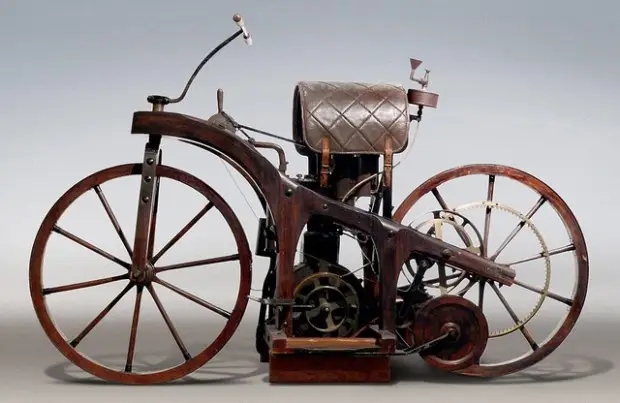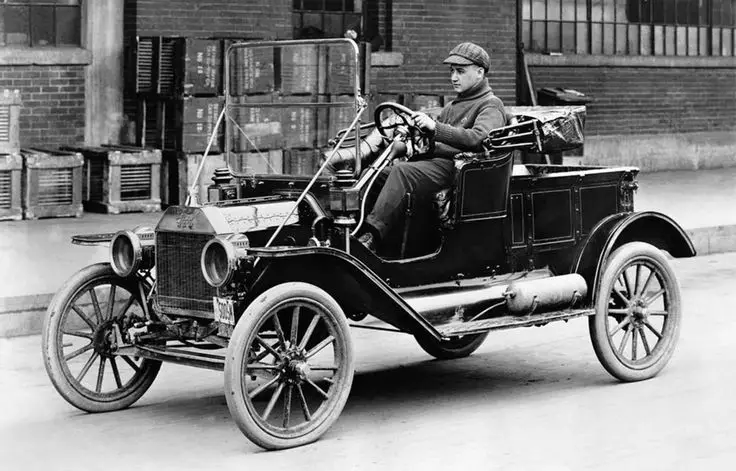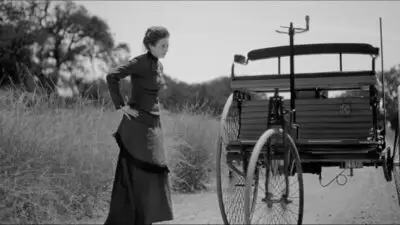When we think of automotive pioneers, Henry Ford often steals the spotlight. Yet the story of the automobile began long before the Model T rolled off assembly lines in Detroit. The true origins of the car trace back to innovators like Karl Benz, who created the first practical automobile in 1885, nearly two decades before Ford Motor Company was established.

These forgotten visionaries laid the foundation for the modern automotive industry through their ingenuity and perseverance. From Nicolas-Joseph Cugnot’s steam-powered vehicle in the 1700s to Charles and Frank Duryea’s successful American gasoline automobile in 1893, these early inventors overcame tremendous technical challenges with limited resources. Even Ransom E. Olds pioneered assembly line techniques before Ford perfected them, introducing his Curved Dash Oldsmobile in 1901.
Key Takeaways
- Numerous inventors contributed crucial automotive innovations decades before Henry Ford revolutionized manufacturing in Detroit.
- Assembly line production techniques were initially developed by Ransom Olds years before Ford implemented and perfected them for the Model T.
- Early automotive pioneers across multiple continents created practical vehicles that shaped the fundamental designs still recognizable in modern cars.
The Dawning of the Automotive Era

The automobile’s birth occurred decades before Henry Ford’s assembly line, with several inventors contributing crucial innovations during the late 19th century. These early developments transformed transportation forever and laid the groundwork for modern vehicles.
Origins of the Horseless Carriage
The concept of self-propelled vehicles dates back centuries, but practical automobiles emerged during the Industrial Revolution. Early inventors dreamed of creating a “horseless carriage” that could travel efficiently without animal power.
The critical breakthrough came with the development of the internal combustion engine. In 1885, Karl Benz designed the first practical automobile powered by gasoline, featuring three wheels and reaching speeds of about 10 mph.
This Motorwagen included several innovations:
- A four-stroke engine
- Electric ignition
- Water cooling system
- Differential gears
Benz’s vehicle wasn’t just a prototype—it went into commercial production, marking the true beginning of the automotive age.
Gottlieb Daimler’s Contributions
While Benz focused on complete vehicles, Gottlieb Daimler worked on creating better engines that could power various transportation forms. In 1885, he built a high-speed internal combustion engine that revolutionized automotive design.
Daimler’s innovations included:
- The first high-speed gasoline engine
- A vertical cylinder arrangement
- An improved carburetor design
Working with Wilhelm Maybach, Daimler installed his engine on a wooden bicycle in 1885, creating the first motorcycle. A year later, they built the first four-wheeled automobile with their engine.

Daimler’s engines were lighter and more efficient than previous designs. His work allowed for faster vehicles with better performance characteristics, setting the stage for the rapid advancement of automotive technology in the following decades.
Early Automotive Innovators

Several inventors made crucial contributions to automobile development in the late 19th and early 20th centuries, establishing foundations that Henry Ford would later build upon. These pioneers created new technologies and manufacturing methods that transformed transportation forever.
The Duryea Brothers’ Advancements
Frank and Charles Duryea played a pivotal role in American automotive history. In 1893, they designed and built the first successful American gasoline automobile. Their motorized wagon featured a one-cylinder gasoline engine and represented a significant technological leap forward.
The brothers established the Duryea Motor Wagon Company in 1895, becoming America’s first commercial automobile manufacturers. Their innovation was proven when they won America’s first automobile race held in Chicago that same year. The race covered 54 miles with an average speed of 7.5 mph in snowy conditions.

The Duryea brothers’ vehicles included practical innovations like a three-speed transmission and spray carburetor. Their work demonstrated that gasoline engines could be reliable for personal transportation, helping shift public perception away from electric and steam-powered alternatives.
Ransom Olds and the Assembly Line
Ransom Eli Olds, founder of Oldsmobile, revolutionized car manufacturing before Ford perfected the method. In 1901, Olds implemented the first automotive assembly line for his Curved Dash Oldsmobile, making it America’s first mass-produced automobile.

Unlike later assembly lines where cars moved past stationary workers, Olds’ system involved workers bringing parts to stationary vehicles. This innovation dramatically increased production efficiency, allowing Oldsmobile to manufacture over 5,000 cars in 1904—making it temporarily the highest-volume car producer in America.
The Curved Dash Oldsmobile sold for $650, making automobile ownership possible for middle-class Americans for the first time. Olds’ assembly line concept was later studied and improved by Henry Ford, who implemented the moving assembly line in 1913.
George Baldwin Selden’s Influence
George Baldwin Selden, a patent attorney and inventor, filed a patent application in 1879 for a “road engine” powered by a compression engine. Though he never built the vehicle himself, Selden’s patent was granted in 1895 after numerous amendments and delays.
Selden partnered with the Association of Licensed Automobile Manufacturers (ALAM) to collect royalties from virtually all American automakers. This arrangement created a significant barrier to industry entry until Henry Ford challenged the patent in court in 1903.
After eight years of litigation, Ford won a partial victory when courts ruled that his four-cylinder engines didn’t infringe on Selden’s two-cylinder design. This ruling effectively ended Selden’s monopolistic control and opened the industry to greater competition and innovation.
Technological Progress and its Pioneers

The automotive industry has been shaped by visionaries who pushed the boundaries of technology and quality standards. These pioneers created lasting legacies through their innovative approaches to manufacturing, performance, and alternative energy solutions.
Henry Joy and Packard’s Quality Craftsmanship
Henry Joy transformed the automotive landscape as president of Packard Motor Car Company from 1903 to 1916. Unlike many early manufacturers focused on mass production, Joy emphasized superior engineering and craftsmanship.
Under his leadership, Packard introduced several innovations including:
- The modern steering wheel (replacing tiller controls)
- The H-slot gearshift pattern still used today
- 12-cylinder engines with unprecedented smoothness
Joy’s insistence on quality over quantity established Packard as America’s premier luxury brand. He famously implemented rigorous testing protocols where every vehicle underwent extensive road tests before delivery.
The company’s slogan “Ask the man who owns one” reflected Joy’s confidence in Packard’s reliability. His mechanical engineering background helped him understand the technical challenges of automobile production while maintaining strict quality standards.
Lee Iacocca and the Muscle Car Era
Lee Iacocca revolutionized American automotive culture during his tenure at Ford in the 1960s. His greatest achievement came in 1964 with the introduction of the Ford Mustang, which sold over 400,000 units in its first year alone.
Iacocca understood the emerging youth market’s desire for affordable performance. His vision created the “pony car” segment—sporty vehicles with:
- Powerful V8 engines
- Aggressive styling
- Customization options
- Accessible pricing
The Mustang’s success sparked the muscle car era, with competitors rushing to create their own performance vehicles. Iacocca’s marketing savvy positioned these cars as symbols of American freedom and power.
Later at Chrysler, Iacocca rescued the company from bankruptcy through bold leadership and innovative product development. His autobiography became one of the best-selling business books of all time, cementing his legacy as an automotive visionary.
Efforts in Harnessing Alternative Energy Sources
Long before today’s electric vehicle revolution, forward-thinking automotive pioneers explored alternative energy sources. Between 1897-1900, electric vehicles actually outsold gasoline models in the United States.
Early electric vehicle companies faced significant challenges:
- Limited battery technology
- Lack of charging infrastructure
- Competition from increasingly efficient gasoline engines
In 1897, the Electric Carriage and Wagon Company became the first commercial electric vehicle manufacturer. Their vehicles were especially popular as taxis in urban centers due to their quiet, clean operation.
Ferdinand Porsche developed the Lohner-Porsche in 1900, featuring hub-mounted electric motors—a technology rediscovered by modern engineers. Thomas Edison worked extensively on battery technology, believing electricity would power transportation’s future.
These early efforts established principles that would eventually enable modern electric vehicles, demonstrating how visionary engineers recognized fossil fuels’ limitations even at the automobile’s dawn.
Paradigm Shifts in Manufacturing

While early automotive pioneers focused on invention, the true revolution came from transforming how cars were built. Manufacturing innovations dramatically reduced production time and costs, making automobiles accessible to average citizens.
Adoption of the Moving Assembly Line
Before the moving assembly line, cars were built station-by-station with workers gathering parts and assembling each vehicle individually. This method was slow and expensive, limiting automobile ownership to the wealthy.
Henry Ford’s team at the Ford Motor Company revolutionized this process in 1913. They created a moving assembly line where the car chassis traveled along a conveyor system while workers performed specific tasks at fixed stations.
The results were remarkable:
- Production time dropped from 12.5 hours to just 93 minutes per vehicle
- Labor costs decreased by approximately 60%
- Daily output increased from 100 to 1,000 vehicles
This innovation wasn’t entirely Ford’s creation. He adapted concepts from slaughterhouses, grain mills, and other industries that used continuous-flow production.
Mass Production’s Impact on Society
Mass production transformed automobiles from luxury items to everyday necessities. The manufacturing plant became a symbol of American industrial might and economic progress.
As production efficiency increased, prices fell dramatically. Ford’s Model T cost $850 in 1908, but by 1925, the price had dropped to $290 – within reach of middle-class families.

This accessibility created a transportation revolution. Rural communities gained better access to urban markets and services. New industries emerged to support automobile ownership: gas stations, repair shops, roadside restaurants.
Workers’ lives changed too. Assembly line jobs offered higher wages but required less skill than traditional craftsmanship. The 40-hour workweek became standard as Ford realized fatigued workers made more mistakes.
The environmental and urban impacts were significant. Cities expanded outward as commuting became practical, creating the first suburbs.
The Role of Culture and Marketing

The automobile’s rise to prominence wasn’t solely due to technological innovation. Cultural factors and clever marketing strategies played crucial roles in determining which inventors and their creations would be remembered by history.
Influence of Advertisements on Popularity
Early automobile advertisements transformed how people viewed these machines. Before widespread adoption, cars were portrayed as luxury items for the wealthy elite. Newspaper and magazine ads highlighted reliability and craftsmanship rather than speed or power.
Companies like Oldsmobile pioneered modern automotive advertising with catchy slogans and visual storytelling. Their “Nothing to watch but the road” campaign emphasized simplicity when competitors’ vehicles required constant attention.
Forgotten pioneers often lacked the marketing resources of larger manufacturers. Karl Benz, though technically brilliant, initially struggled with promotion until his wife Bertha’s famous long-distance drive demonstrated his vehicle’s reliability.
By the early 1900s, automotive advertising campaigns became sophisticated, using emotional appeals connecting cars to freedom and status.
Automobiles and the American Dream
The automobile quickly became intertwined with American culture and identity. Early inventors who recognized this connection gained significant advantages in the marketplace.
The Ford Model T wasn’t just promoted as a vehicle but as a pathway to a better life. Ford’s marketing genius was connecting his product to the American Dream – the idea that prosperity and mobility were available to anyone willing to work.
Pre-Ford inventors like the Duryea brothers understood the practical benefits of automobiles but failed to capitalize on the cultural significance of personal transportation.
Regional differences in American culture also influenced which automotive innovations gained traction. Urban inventors focused on luxury and style, while rural-focused inventors emphasized durability and simplicity on rough roads.
The automobile transformed from curiosity to necessity through deliberate cultural positioning more than technological superiority.
Environmental Considerations in the Industry

Early automobile pioneers rarely considered environmental impacts, yet their inventions set the stage for both pollution challenges and innovative solutions that would emerge in later decades.
Impact of Cars on Pollution
The proliferation of automobiles created unprecedented environmental challenges. By the mid-20th century, car emissions became a primary source of urban air pollution, releasing harmful compounds including carbon monoxide, nitrogen oxides, and particulate matter.
Major manufacturers like Fiat initially focused on performance rather than emissions control. The Italian automaker, founded in 1899, developed increasingly powerful engines without environmental safeguards, a common industry practice until the 1970s.
The environmental awakening began with the 1970 Clean Air Act in the United States, forcing manufacturers to reduce harmful emissions. Catalytic converters became mandatory equipment, marking the first significant step toward cleaner automobiles.
The Movements towards Eco-friendly Vehicles
The quest for environmentally responsible transportation actually began earlier than most realize. Electric vehicles first appeared in the 1830s, predating gasoline cars by decades. The electric vehicle company Baker Electric, founded in 1899, produced cars that ran cleanly but suffered from limited range.
Hybrid technology emerged as a practical compromise in the late 20th century. The 1997 Toyota Prius revolutionized the market, proving eco-friendly vehicles could achieve commercial success.
India’s Tata Motors introduced the Indica in 1998, representing developing markets’ growing interest in fuel-efficient transportation. This small hatchback prioritized efficiency in a market where fuel economy directly affected affordability.
Modern automakers now embrace electrification, with companies like Tesla pushing boundaries of range and performance while maintaining zero tailpipe emissions.
Legacy and Future of the Automobile

The automobile’s evolution spans well beyond the contributions of early pioneers, creating a foundation for both iconic personalities and revolutionary innovations that continue to transform transportation today.
Notable Personalities in Automotive History
The Dodge Brothers, John and Horace Dodge, left an indelible mark on the industry after initially supplying parts to Ford before establishing their own company. Their manufacturing facility in Hamtramck became legendary for quality and innovation.

Enzo Ferrari revolutionized sports car manufacturing by blending racing technology with road vehicles, creating machines that prioritized performance and driver experience above all else.
Michael Schumacher, while not an inventor, elevated automotive racing to new heights, demonstrating the capabilities of modern vehicles under extreme conditions.
The founders of Mazda and Pontiac similarly transformed the industry through their unique approaches to design and engineering.
Many automotive pioneers established test tracks to refine their vehicles before production, a practice that continues in modern automotive development.
Innovations and Trends Shaping the Future
Electric vehicles represent the most significant shift in automotive technology since the internal combustion engine, building upon the electric car concepts that actually preceded gasoline automobiles in the late 1800s.
Autonomous driving systems are evolving from the simple mechanical controls of early vehicles to sophisticated AI that can navigate complex environments independently.
Sustainability has become central to automotive design, with manufacturers developing biodegradable components and zero-emission propulsion systems.
Connected car technology transforms vehicles into mobile computing platforms, a dramatic evolution from the purely mechanical systems developed by automotive industry pioneers.
Women are increasingly recognized for their historical and current contributions, from Bertha Benz’s pioneering drive to modern executives reshaping major manufacturers.
Frequently Asked Questions

Early automotive development was shaped by numerous inventors and innovations across multiple countries. These pioneers laid the critical foundation for modern cars long before Ford revolutionized manufacturing methods.
Who were some notable inventors that contributed to early automotive development before Henry Ford?
Karl Benz is widely recognized as the father of the automobile, having created the first practical motorcar in 1885. His Benz Patent Motorwagen marked a turning point in transportation history.
Ransom E. Olds developed early assembly line techniques and founded the Oldsmobile brand. He patented the basic concept of the assembly line before Ford refined it to greater efficiency.
Ferdinand Verbiest created a small steam-powered vehicle in 1672, making him one of the earliest automotive pioneers, though his creation was not practical for human transportation.

Nicolas-Joseph Cugnot built the first self-propelled vehicle capable of carrying passengers in 1769. His steam-powered “fardier à vapeur” could move at walking speed.

What were the key inventions that preceded Ford’s contribution to the automotive industry?
The internal combustion engine, developed by Nicolaus Otto in 1876, provided a more efficient power source than steam. This four-stroke engine became the foundation for modern car engines.
The Benz Patent Motorwagen introduced the single-cylinder gasoline engine in a three-wheeled vehicle design. This 1885 invention proved automobiles could be practical transportation devices.
Gottlieb Daimler and Wilhelm Maybach created the first four-wheeled automobile in 1889. Their design incorporated a high-speed internal combustion engine that set new standards.

The pneumatic rubber tire, patented by John Boyd Dunlop in 1888, dramatically improved ride comfort and handling. This innovation replaced solid rubber tires on early vehicles.
How did the early inventions in the automotive industry evolve into the cars we see today?
The transition from steam to gasoline power marked a critical evolution. Early steam-powered vehicles gave way to more efficient and convenient internal combustion engines.
Chassis design evolved from modified horse carriages to purpose-built automobile frames. This progression allowed for better handling, stability, and passenger comfort.
Control systems developed from simple tiller steering to the now-standard steering wheel. The introduction of brakes, clutches, and transmissions made vehicles easier to operate.
Manufacturing techniques transformed from individual craftsmanship to assembly line production. This evolution reduced costs and increased availability of automobiles for average citizens.
What was the impact of early automotive pioneers on the popularization of cars?
Early inventors demonstrated that automobiles could be practical alternatives to horse-drawn transportation. Their working prototypes convinced skeptics that mechanical transportation was viable.
Public exhibitions and races showcased automotive technology to wide audiences. These events built enthusiasm and acceptance for this new form of transportation.
The establishment of early automotive companies created competition that drove innovation. This competitive environment led to rapid technological improvements and cost reductions.
Early adopters created demand that justified increased production. Their willingness to embrace new technology encouraged further investment in automotive development.
Who was responsible for designing the first automobile models?
Karl Benz created the first true automobile with his 1885 Patent Motorwagen. This three-wheeled vehicle established the basic concept of a self-propelled vehicle powered by an internal combustion engine.
Gottlieb Daimler and Wilhelm Maybach designed the first four-wheeled automobile in 1889. Their “steel-wheeled car” established many principles still used in modern vehicles.
The history of the automobile includes Leonardo da Vinci, who created designs for transport vehicles as early as the 15th century, though these remained conceptual.
Charles and Frank Duryea built the first successful American gasoline-powered car in 1893. Their Duryea Motor Wagon became the first commercially produced automobile in the United States.
What is the timeline of significant milestones in car development leading up to the era of Ford?
1672: Ferdinand Verbiest creates a small-scale steam-powered vehicle in China, considered by some to be the first automobile.
1769: Nicolas-Joseph Cugnot builds the first self-propelled steam vehicle capable of carrying passengers.
1885: Karl Benz patents the Motorwagen, widely considered the first true automobile powered by an internal combustion engine.
1893: The Duryea brothers produce the first American-made gasoline automobile and subsequently start the first American automobile manufacturing company.
1901: Ransom Olds creates the first automotive assembly line, leading to the Curved Dash Oldsmobile becoming the first mass-produced car in America.
1908: Ford introduces the Model T, which would revolutionize manufacturing and make automobiles affordable for average Americans.



